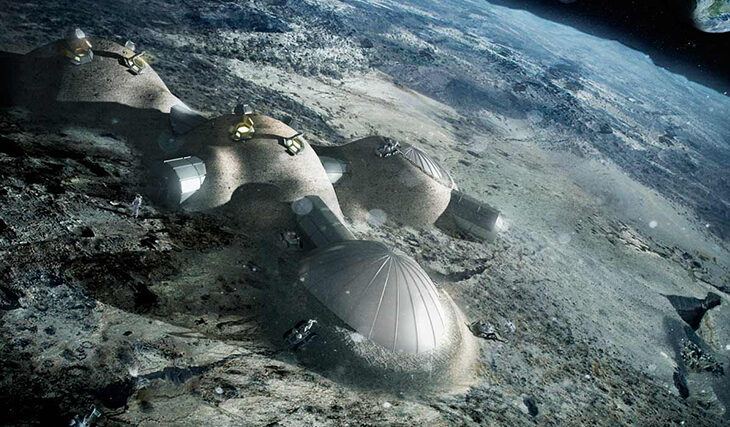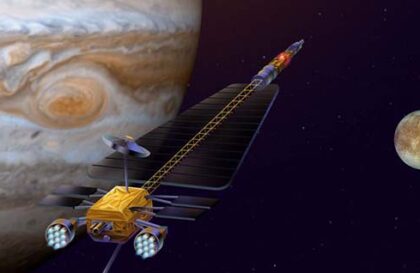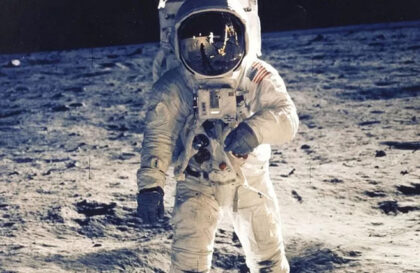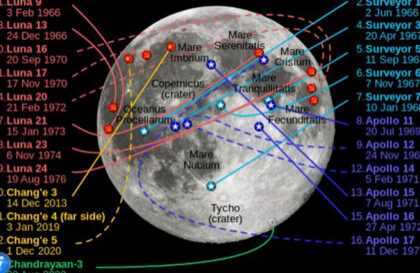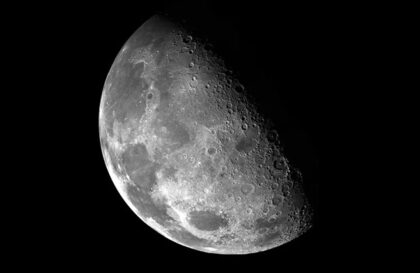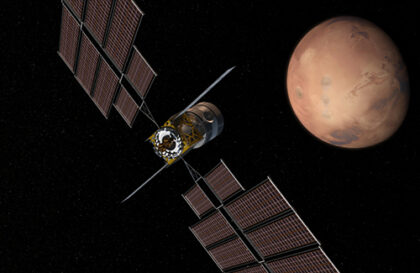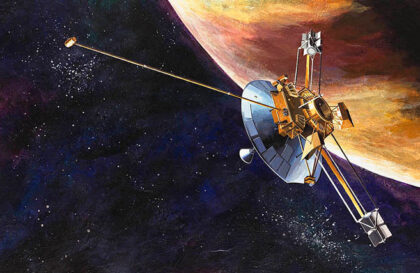The earth’s reserves of gold, diamonds, and zinc remain for only 20 years, and platinum, copper, and nickel – for 40 years.
The richest alternative source of rare earth metals is space, specifically the Moon and near-Earth asteroids, many of which contain millions of tons of iron, nickel, cobalt, and platinum worth tens of billions of dollars. Over the past seven years, astronomers have observed 222 new craters on the Moon from asteroid impacts, with a quarter of them containing rare earth metals.
Is it possible to mine gold on the Moon?
Scientists plan to extract two types of fossils on the Moon:
the first – for local use at the production site, including water sources and construction materials;
the second is for transportation to Earth, including gas masses such as helium-3, which can be used in thermonuclear fusion, and rare metals.
Among the many asteroids on the Moon, there are three main types:
- type C contains water, organic matter, and carbon,
- type M is rich in platinum group metals, as well as nickel and iron,
- type S is interesting due to the presence in their depths of silicates of various natures and consistencies.
According to Casey Honniball from NASA Goddard Space Flight Center, 1 cubic meter of lunar soil contains approximately 0.3 liters of water. But it can not be found on the entire surface of the Moon.
The Moon is estimated to contain $206 billion worth of water, $1.5 quadrillion worth of helium, and billions of US dollars worth of gold.
Metals such as platinum are found not only on asteroids but also in low-Earth orbit, in the form of space debris and other bodies. The collection of this space debris is becoming an international initiative, which could sideline lunar projects. It is advisable to bring valuable metals such as osmium, iridium, and gold to Earth from space as priority resources.
NASA is exploring new techniques to break rocks, different of those used on Earth. (Image courtesy of NASA | JPL-Caltech.)
Helium-3
The helium-3 isotope found on the Moon is of great value since it is practically absent on Earth. This is moon gold. The Earth’s atmosphere contains only about 35 tons of helium-3, while the Moon has about 500 million tons of this isotope. Helium-3 on Earth is produced by the radioactive decay of tritium, and its production is limited. Helium-3 is primarily used in science and medicine, including MRI machines and scientific research, which require very low temperatures.
The cost of 1 kg of helium-3 reaches about $15 million.
Helium-3 is considered an ideal fuel that can replace traditional resources. One kilogram of helium-3 through nuclear fusion can produce 19 MW of electricity, which is equivalent to the energy obtained by burning 15 million tons of oil. Mining helium-3 on the Moon could provide Earth with energy for thousands of years, and this isotope is environmentally friendly and not radioactive. However, the technology for its use in reactors has not yet been fully developed.
Low gravity – what to do with it?
On the Moon, mining operations face an efficiency that is approximately 5-6 times less than on Earth. This is caused by low gravity on the Earth’s satellite. For example, drilling rigs are subject to significant axial pressure, and in lunar conditions, this will naturally lead to the lifting of the rig itself above the surface rather than to drilling rock. Excavators in conditions of low lunar gravity when collecting soil will move away from the slaughter site due to their powerful pressure force.
However, scientists are proposing a solution to this problem using anchors that make mining equipment stationary and resistant to lunar conditions. However, attachment to the lunar soil (regolith) is a difficult task due to the lack of information about its properties.
Unacceptable wear and tear on equipment, what to do?
Lunar regolith is a fine and very abrasive substance, which means equipment such as drills wear out quickly. Replacing equipment on the Moon is challenging.
Additionally, working with lunar regolith requires an unconventional approach due to the electrical charge on the lunar surface caused by exposure to charged particles from solar winds over millennia. Charged regolith particles tend to stick tightly to any objects and surfaces. Based on this data, it is possible to mine under the surface, for example, using a mole machine, which will pass through the soil and, while drilling, suck it into itself like a vacuum cleaner.
However, the very fact of adhesion will require the presence of some kind of intake hole that will not become clogged. It is noteworthy that many practical tests of extraterrestrial mining stations have already been carried out. For this purpose, special plasma installations have been created that form an analog of lunar regolith from terrestrial materials with which these stations can work and test.
Lack of atmosphere – are there solutions?
Robotic lunar mining may have the advantage of not having an atmosphere. No corrosion of metal components. However, water sublimation (occurs at a temperature of +160 0C) can cause significant fuel losses during active drilling methods. Water particles will instantly evaporate when heated. On Earth, water condenses easily, acting as a lubricant.
Therefore, scientists are developing a cold drilling technique that can reduce the heating of surfaces during operation and minimize fuel losses. By changing the configuration of the drill bits using a magnetic field, the friction factor will be reduced, which will lead to a significant reduction in heating during the drilling process. It is planned to use percussion drilling. After the impact, the drill rotates. At the moment of impact, the contact of the tool with the rock is minimized. This virtually eliminates friction. Impact technology allows you to break off rocks without cutting them.
Microwave drilling, in which rock is destroyed by microwaves, looks more promising. This allows you to quickly increase the depth of the well. On Earth, there are plans to use this method to drill ultra-deep wells to harness the Earth’s internal heat.
In 2016, a method for extracting water reserves on the Moon using ground heating techniques was successfully tested, including tests simulating lunar regolith using a CubeSat-type device. The method involves using a heated cone with holes to release water, even from chemically bound sources such as hydroxides or crystalline hydrates.
Another problematic aspect is the removal of heat from heating working elements in a vacuum. Direct air heat transfer on Earth does this job well. In the conditions of airless space, scientists have come up with the idea of removing heat in the form of radiation.
The issue of concentration of collected rocks
For minerals that require transportation, an effective approach is to process them at the mine site, rather than transport them to Earth in the form of ores. One promising processing method is “flash metallurgy,” which involves evaporating ore and creating a plasma cloud, then separating the substances using magnetic fields to produce the purest possible metals. This process is energy-intensive but provides a high degree of purification.
The lunar soil is rich in magnetic materials such as iron titanate and ilmenite. The presence of these makes it possible to use already existing methods of magnetic ore separation.
When will we get the first ore on the Moon?
It was planned to extract minerals from space objects, including the Moon and asteroids, as early as 2020. DSI and Planetary Resources had such plans. However, with the emergence of competitors such as Aten-Engineering and dependence on NASA’s lunar missions, the timing has shifted.
Credit: Factor Tech
According to several experts, the first steps towards mining on the Moon will become a reality in the next 20 years, and the industrial and mining space industry will actively develop over the next half-century. China also plans to contribute to asteroid mining, with a focus on the 2040s.
As of 2023, at least 6 countries and many private companies have announced that they are planning a total of at least 250 missions to the Moon to establish outposts on the Earth’s satellite and assess the resource potential of the Moon.
The struggle for lunar resources. Legal aspect
The legal issue is one of the factors making it difficult to develop lunar resources. The current “Moon Treaty” considers cosmic bodies to be objects of the public domain, but does not regulate mining on them. Only 18 countries have ratified the treaty, and key space powers such as the United States, Russia, India, and China are not among them.
The 1967 Outer Space Treaty remains an important document of international space law. Its second article prohibits the national appropriation of space objects, no matter how it occurs. This agreement was signed by more than 100 countries, including the USA and the USSR.
The project Artemis Accords, initiated by the United States in October 2020, sets new conditions for lunar exploration projects and allows for the extraction of minerals there. The document was signed by 8 countries: the USA, the UK, Italy, Canada, Australia, Japan, UAE and Luxembourg. However, Russia and China, the main competitors, refused to participate in this agreement, fearing US dominance in future international cooperation.
The most unexpected awaits us ahead.
Banner image: Chris Hadfield recently explained how humanity should create a Moon base before attempting to colonize Mars. Credit: Foster + Partners is part of a consortium set up by the European Space Agency to explore the possibilities of 3D printing to construct lunar habitations. Credit: ESA/Foster + Partners
Image credit: https://www.universetoday.com
https://www.mining.com
https://hypebeast.com
http://www.heliumscarcity.com
https://www.atalayar.com
